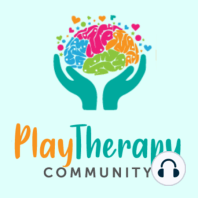58 min listen

30: Knowing the Difference Between a Tantrum & Meltdown and How to Respond to Both
30: Knowing the Difference Between a Tantrum & Meltdown and How to Respond to Both
ratings:
Length:
25 minutes
Released:
Jul 22, 2016
Format:
Podcast episode
Description
Episode 30, Knowing the Difference Between a Tantrum and a Meltdown and How to Respond to Both In This Episode: Tantrums A tantrum and a meltdown are different. It’s important to differentiate between the two as it helps guide a helpful response by the parent. Knowing that tantrums are a result of the child trying to get something and meltdowns are a reaction to sensory overstimulation. A tantrum is based in an attempt for the person (usually a child, but not always!) to get something they want. It is behavioral based and some suggest that impulsivity can play a key role in their occurrence. A child may have a tantrum if he wants a toy at the story, but is told no. The tantrum is in an effort (may be conscious or unconscious) to get the toy. It doesn’t need to be based in a desire to attain tangible things though. A child can also feel intense emotions that lead to a tantrum over issues such as attention, activities, and such. It usually involves yelling, crying, kicking and screaming, which may look a lot like a meltdown to the untrained eye. The child usually can control a tantrum, but may have limitations due to emotional flooding. Tantrums are apt to stop when gets what he / she either gets what he / she wants or if he /she realizes that the tantrum is ineffective unlikely to produce the desired effect. Characteristics of a Meltdown A meltdown is a reaction to feeling overwhelmed, usually due to sensory overload (too much sensory information at once to process). It looks a lot like a tantrum, with the exception of some body signals such as holding ears, not stopping for communication, etc. The commotion of a supermarket may trigger a sensory meltdown. The brain goes into overload and fight, flight or freeze response seems to set in. For some, it can be a response to having a lot of things going on internally at one time, such as stress, worry, etc. It’s important to mention that a tantrum lead to a meltdown due to the intensity. Be sure to check out episode 23 on Sensory Processing Disorder to learn more. http://jackieflynnconsulting.com/23-practical-understanding-of-sensory-processing-disorder/ A child will often stop a tantrum if she attains what she wants such as a candy bar, toy, activity, attention, etc. Or if she’s rewarded for using a more desirable behavior such as using her words to ask, being kind or whatever fits the situation. It’s important to resist the urge to give the child what she wants as reinforcement, as it will cause more and more tantrums in the future. It’s a great teachable opportunity to teach your child that outbursts aren’t the way to get things she wants in life. These lessons will serve her well through the years. Now a meltdown is different. A meltdown isn’t likely to stop when a child gets what she wants. In fact, it may just be a matter of changing the sensory input that the child is receiving. This happens a lot with kids with Sensory processing disorder. Once the child leaves the overstimulating environment, she may start to feel calmer. So how can you handle tantrums and meltdowns differently? For tantrums, it’s important to recognize acknowledge what your child wants without giving in as reinforcement. Make it clear that you understand what she’s after. “I realize that you’d like a candy bar. Now isn’t a time that we eat candy though. You can have an apple or another snack when we get in the car though.” Then help her see there’s a more appropriate behavior that will work. “When you choose to speak calmly and respectfully, you may share with me what you choose.” To de-escalate a meltdown, help your child find a safe, quiet place to calm. “We’re going to go out to the car now. It’s quiet there and I can turn on the air conditioning so that we are both cool and comfortable.” Resist the urge to lecture or talk too much though, as that can be over stimulating in and of itself though. It’s super helpful to identify and name the emotion that your child is feeling. It bui
Released:
Jul 22, 2016
Format:
Podcast episode
Titles in the series (100)
31: Recognizing and Healing From Emotional Abuse: Laura Reagan, LCSW-C by Play Therapy Community